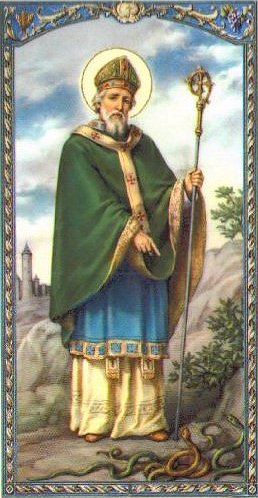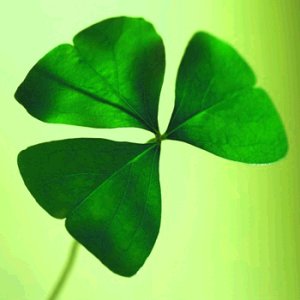Beannachtaí na Féile Pádraig
 Beannachtaí na Féile Pádraig is the Gaelic way of expressing the prayer that you have all the blessings of Saint Patrick’s Day and all of the “luck of the Irish” besides. Tomorrow is Saint Patrick’s Day, celebrated and observed all over the world with parades, wearing green clothes, dying all kinds of food and drink (and rivers if you’re in Chicago) green, and attempting Irish accents.
Beannachtaí na Féile Pádraig is the Gaelic way of expressing the prayer that you have all the blessings of Saint Patrick’s Day and all of the “luck of the Irish” besides. Tomorrow is Saint Patrick’s Day, celebrated and observed all over the world with parades, wearing green clothes, dying all kinds of food and drink (and rivers if you’re in Chicago) green, and attempting Irish accents.
Great things often have humble beginnings. Did you know that Patrick, originally from Wales, was sold into slavery as a boy and spent six years of servitude in Ireland before he escaped and undertook religious training abroad? Once he completed his training, he made it his life’s mission to return to the land of his once captivity in order to free that people from spiritual bondage.
Saint Patrick is now the patron saint and national apostle of Ireland, credited with bringing Christianity to Ireland and casting out the serpents. Most of what is known about him comes from his two works, the Confessio, a spiritual autobiography, and his Epistola, a denunciation of British mistreatment of Irish Christians. Saint Patrick described himself as a “most humble-minded man, pouring forth a continuous paean of thanks to his Maker for having chosen him as the instrument whereby multitudes who had worshipped idols and unclean things had become the people of God.”
Saint Patrick is probably most known for driving the snakes from Ireland and it is true there are no snakes in Ireland. As in many old pagan religions of his day, serpent symbols were common and often worshiped. “Driving the snakes from Ireland” is probably symbolic of putting an end to that pagan practice. While not the first to bring the Gospel to Ireland, it is Patrick who is said to have encountered the Druids at Tara and abolished their pagan rites. The story holds that he converted the warrior chiefs and princes, baptizing them along with thousands of their subjects, in the “Holy Wells” that still bear this name to this very day.
Saint Patrick’s Day has come to be associated with everything Irish: anything green and gold, shamrocks and “luck.” To those who celebrate its intended meaning, Saint Patrick’s Day is a traditional day for spiritual renewal and offering prayers for missionaries worldwide. Of the many symbols we associate with this holiday, most notable is likely the Shamrock, which happens to be the National Flower of Ireland. Saint Patrick used the three leaves of the Shamrock to explain the Holy Trinity to pagans and unbelievers.
 One theory as to why we celebrate on March 17 each year is that it is believed to be the day that St. Patrick died. There are several accounts of Saint Patrick’s death. One says that Patrick died at Saul, Downpatrick, Ireland, on March 17, 460 A.D. His jawbone was preserved in a silver shrine and was often requested in times of childbirth and other times of concentrated prayer. Another account says that Saint Patrick ended his days at Glastonbury, England and is buried there. The Chapel of Saint Patrick still exists as part of Glastonbury Abbey. Today, many Catholic places of worship all around the world are named after Saint Patrick, including cathedrals in New York and Dublin. Since the holiday began in Ireland, it is thought that as the Irish spread out around the world, they took with them their history and celebrations.
One theory as to why we celebrate on March 17 each year is that it is believed to be the day that St. Patrick died. There are several accounts of Saint Patrick’s death. One says that Patrick died at Saul, Downpatrick, Ireland, on March 17, 460 A.D. His jawbone was preserved in a silver shrine and was often requested in times of childbirth and other times of concentrated prayer. Another account says that Saint Patrick ended his days at Glastonbury, England and is buried there. The Chapel of Saint Patrick still exists as part of Glastonbury Abbey. Today, many Catholic places of worship all around the world are named after Saint Patrick, including cathedrals in New York and Dublin. Since the holiday began in Ireland, it is thought that as the Irish spread out around the world, they took with them their history and celebrations.
The biggest observance of all is, of course, in Ireland. With the exception of restaurants and pubs, almost all businesses close on March 17th. Being a religious holiday as well, many Irish attend mass, where March 17th is the traditional day for offering prayers for missionaries worldwide.
Hallee
I’m so grateful for your visit, today.
You would bless me if you added me to your
 via email.
via email. You can also become a fan on


Thank you Hallee, I linked this on FB. Love it :)